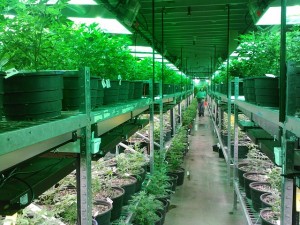Like virtually all medicines, cannabis can induce its own unique set of side effects. Although not everyone’s experience comes with side of adverse reactions, it’s worth nothing that everyone can be at risk, especially if you’re new to marijuana. Keep in mind, these side affects are caused by the main psychoactive ingredient in cannabis, called THC. Please note that this list doesn’t include all side effect of THC, but it cites the most commonly experienced.
There are a few ways that might help you to dodge the no-to enjoyable effects of THC:
- Try a strain high in CBD. It is not psychoactive in the same way as THC, and it can help curb the side effects of THC for a more relaxed, mellow experience.
- Start with a very low dose when using high-THC strains. Adverse side effects tend to set in with continued or heavy consumption, so start off small with a puff or two and see how you feel. You’d be surprised fun you can have without getting yourself wasted.
- If you’re sensitive to smoking or edibles, you could try vaping your cannabis. It allows a great deal of dosing control with mild effects, which made them a very popular choice among newbies and the younger generation.
- If you do choose edibles and are not used to THC, start off with a low dosage of 5mg and work your way up. No need to get in over your head on the first try.
- Drink lots of water if you’re using cannabis. Hydration is key to avoid many unpleasant side effect
Here is a list of potential side effects associated with high-THC cannabis strains:
Paranoia and Anxiety
 This is one of the worst side effects of THC. Though small amounts of THC are likely to only induce mild paranoia or social anxiety, edibles and large doses can cause exaggerated side effects. THC is known to relieve anxiety is smaller doses and increase it in larger; this is due to its biphasic effects, meaning it can have two opposite effects in high doses. Some people are even genetically predisposed to experience anxiety with cannabis as a result of brain chemistry.
This is one of the worst side effects of THC. Though small amounts of THC are likely to only induce mild paranoia or social anxiety, edibles and large doses can cause exaggerated side effects. THC is known to relieve anxiety is smaller doses and increase it in larger; this is due to its biphasic effects, meaning it can have two opposite effects in high doses. Some people are even genetically predisposed to experience anxiety with cannabis as a result of brain chemistry.
If you find yourself susceptible to cannabis’ anxious effects, choose a CBD strange as an anti-anxiety solutions, even after you’re high. It might also help if you only consumer when you’re in a comfortable place, like your home or with friends.
Dry Mouth
 We al know it as the dreaded “cottonmouth,” high-THC cannabis can also make your mouth drier than the Mojave Desert. Believe it or not, but there are cannabinoid receptors in our saliva glands. THC mirrors a naturally occurring chemical called anandamide, which binds to these receptors to decrease saliva production. THC, with its high affinity towards these receptors, exaggerates that effect much to our dismay.
We al know it as the dreaded “cottonmouth,” high-THC cannabis can also make your mouth drier than the Mojave Desert. Believe it or not, but there are cannabinoid receptors in our saliva glands. THC mirrors a naturally occurring chemical called anandamide, which binds to these receptors to decrease saliva production. THC, with its high affinity towards these receptors, exaggerates that effect much to our dismay.
Remember to use a low dosage, keep plenty of water handy and maybe even a little bit of chewing gun for when the cottonmouth strikes.
Dry, Red Eyes
Not only does THC cause the mouth to dry out, it can also cause dry, red eyes. It’s this classic, telltale giveaway that made eye drops a natural companion for discreet cannabis consumers. Now the questions would be: What causes it, and are ye drops the only cure?
It may be, in part, due to the fact that smoke can irritate the eyes, however, other consumption methods can also cause dry, red eyes. THC is known to lower blood pressure and dilate blood vessels in the eyes, which leads to redness. Though less likely, an allergy to cannabis can also cause red eyes.
To counter these effects, stay hydrated at all times. Eye drops can be helpful if your eyes are irritated. Make sure you avoid relying on these every time, as some brands can actually cause dryness afterward if used continually.
The Munchies
Unless you have an underactive appetite, the munchies might be a nuisance and side effect of THC. THC actually stimulates areas of the brain associated with appetite, it can be used to jumpstart a fierce hunger that may or may not make you devour a whole pizza by yourself.
Sleepiness and Lethargy
This “side effect” is seen by some as a therapeutic benefit as THC fights insomnia and promotes rest. However, keep in mind that some strains can induce naps, lethargy or an early night’s sleep.
Indica strains have long been associated with sedative effects, so you’re better off using sativa or high-CBD strains for daytime use. You may also try cannabis-infused coffee or tea, or pairing them to help lift out the lethargy.
Impaired Memory
Although memory impairment tends to be less of a problem for those well-accustomed to new consumers, it can be an annoying affliction to many. Luckily, memory impairment with cannabis appears to be temporary, but even short-term effects can get in the way of a productive afternoon and cognitive tasks.
Once again, high-CBD strains are a wonderful alternative for anyone looking to keep their memory and cognition intact. Supplements such as B vitamins may be helpful in countering these side effects, but your best bet for maintaining cognition is dosing low and slow.
You may experience a number of other side affects with cannabis such as headaches, dizziness, and respiratory difficulties, although these are less common. It’s always a good idea to communicate your cannabis consumption with your doctor in case it interacts with another medication you are taking. Also, make sure you take not of any and all risks so you can ensure a good experience for yourself and the loved ones you’re enjoying it with.



